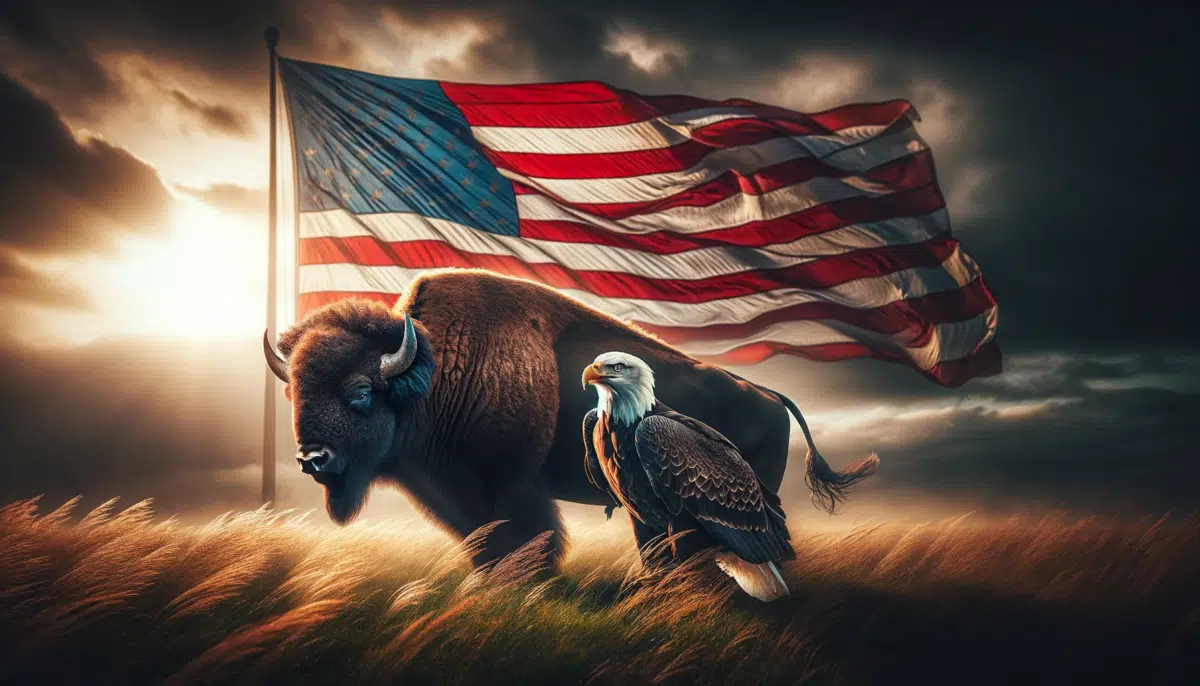America, a land of diverse landscapes, is home to a rich tapestry of wildlife. From the majestic grizzly bear in the north to the iconic bald eagle soaring in the skies, these animals are not just part of the ecosystem but are symbols of the country’s natural heritage. This article explores the top 12 American animals, each unique and integral to the American wilderness.
Bald Eagle
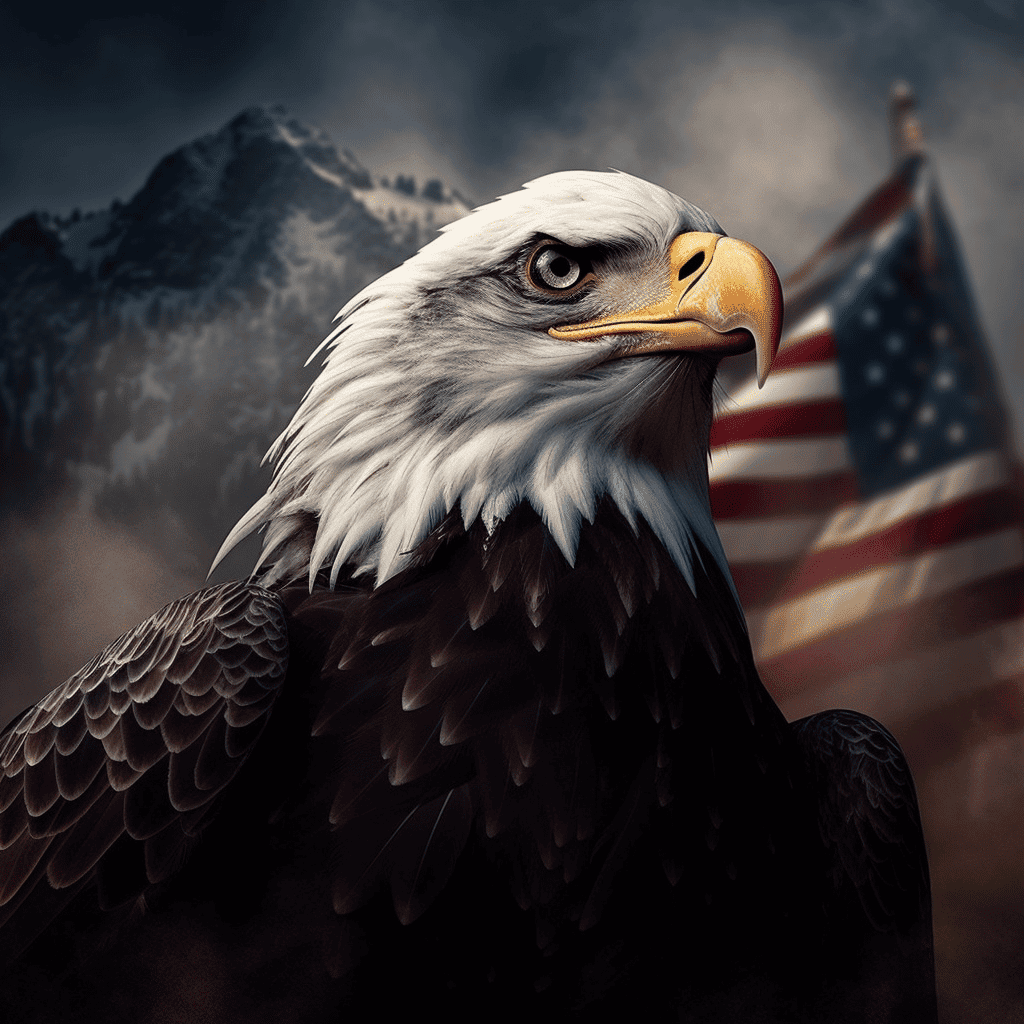
Of course! Here’s a simplified table with 10 key characteristics of a bald eagle:
| Characteristic | Description |
|---|---|
| Scientific Name | Haliaeetus leucocephalus |
| Conservation Status | Least Concern (Not endangered) |
| Habitat | Near large bodies of open water, mainly in North America |
| Physical Appearance | White head and tail, brown body and wings, yellow beak and feet |
| Size | Length: 70-102 cm (28-40 in), Wingspan: 1.8-2.3 m (5.9-7.5 ft) |
| Weight | 3-6.3 kg (6.6-13.9 lbs) |
| Diet | Primarily fish, also birds and small mammals |
| Lifespan | Up to 20 years in the wild |
| Breeding | Monogamous, nests in tall trees or cliffs |
| Symbolism | National bird of the United States; symbol of freedom and strength |
A symbol of strength and freedom, the bald eagle is not just America’s national bird but also a conservation success story. Once endangered, these majestic birds have made a remarkable comeback and can now be seen soaring above lakes and rivers across the country.
American Bison
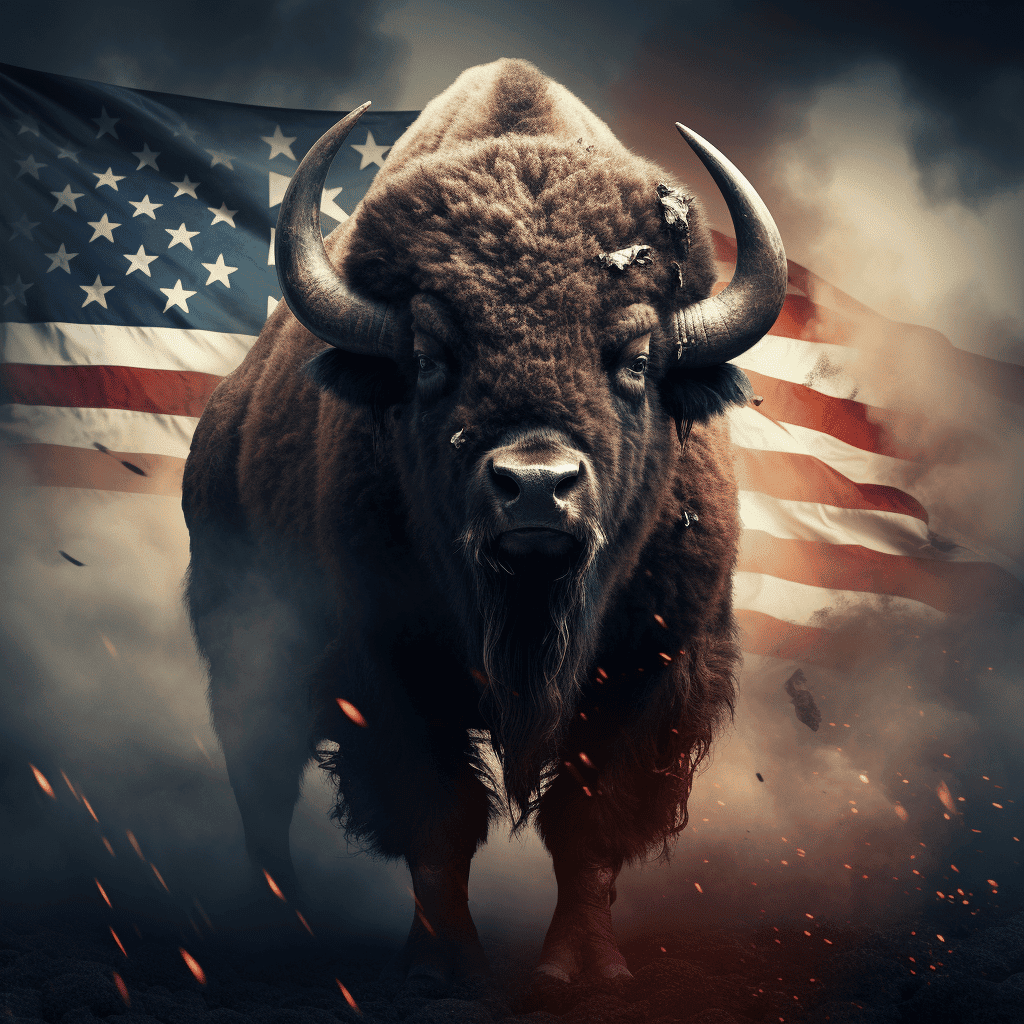
Certainly! Here’s a table summarizing 10 key characteristics of the American Bison:
| Characteristic | Description |
|---|---|
| Scientific Name | Bison bison |
| Conservation Status | Near Threatened |
| Habitat | Grasslands, prairies, and plains of North America |
| Physical Appearance | Large, shaggy brown coat, massive head, and humped shoulders |
| Size | Length: 2.1-3.5 m (7-11 ft), Height: 1.5-1.8 m (5-6 ft) at shoulder |
| Weight | 318-1,000 kg (700-2,200 lbs) |
| Diet | Herbivorous, primarily grasses and sedges |
| Social Structure | Herd animals, form groups for migration and defense |
| Breeding | Polygamous, usually one calf born per year |
| Lifespan | 12-20 years in the wild, longer in captivity |
| Symbolism | Symbol of the American West and Native American cultures |
The American Bison, often referred to as the buffalo, is an iconic species in North American history and ecology.
The bison, often mistakenly called a buffalo, is a symbol of the Great Plains. These massive animals once roamed the grasslands in vast herds and, after a brush with extinction, have been successfully reintroduced in many areas.
Grizzly Bear
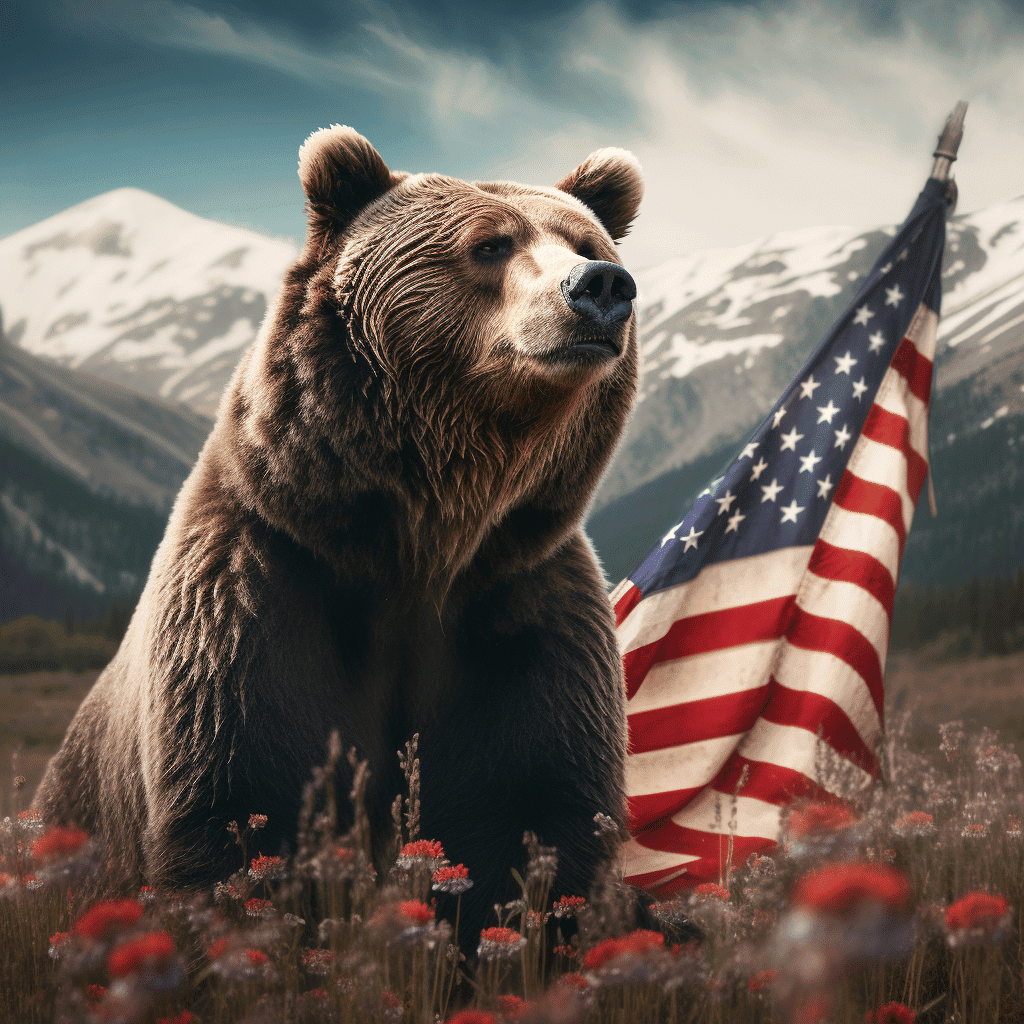
Sure, here’s a table summarizing 10 key characteristics of the Grizzly Bear:
| Characteristic | Description |
|---|---|
| Scientific Name | Ursus arctos horribilis |
| Conservation Status | Least Concern, but specific populations may be threatened |
| Habitat | Forests, mountain regions, and tundras in North America |
| Physical Appearance | Brown fur, often with grizzled (silver-tipped) coat; distinct shoulder hump |
| Size | Length: 1.8-2.4 m (5.9-7.8 ft), Height: 0.9-1.2 m (3-4 ft) at shoulder |
| Weight | 180-360 kg (400-790 lbs), can be up to 600 kg (1,320 lbs) |
| Diet | Omnivorous: berries, roots, fish, small mammals, carrion |
| Social Structure | Solitary, except females with cubs or during mating season |
| Breeding | Mating in summer; delayed implantation of embryos |
| Lifespan | 20-25 years in the wild, up to 30 years in captivity |
| Behavior | Notoriously aggressive when threatened or protecting young |
The Grizzly Bear is known for its strength and has a significant role in the cultures and folklore of many Native American groups.
The grizzly, a subspecies of the brown bear, is a symbol of the American wilderness. Found in the northern Rocky Mountains and parts of Alaska, these formidable predators are admired for their strength and solitary nature.
Florida Manatee
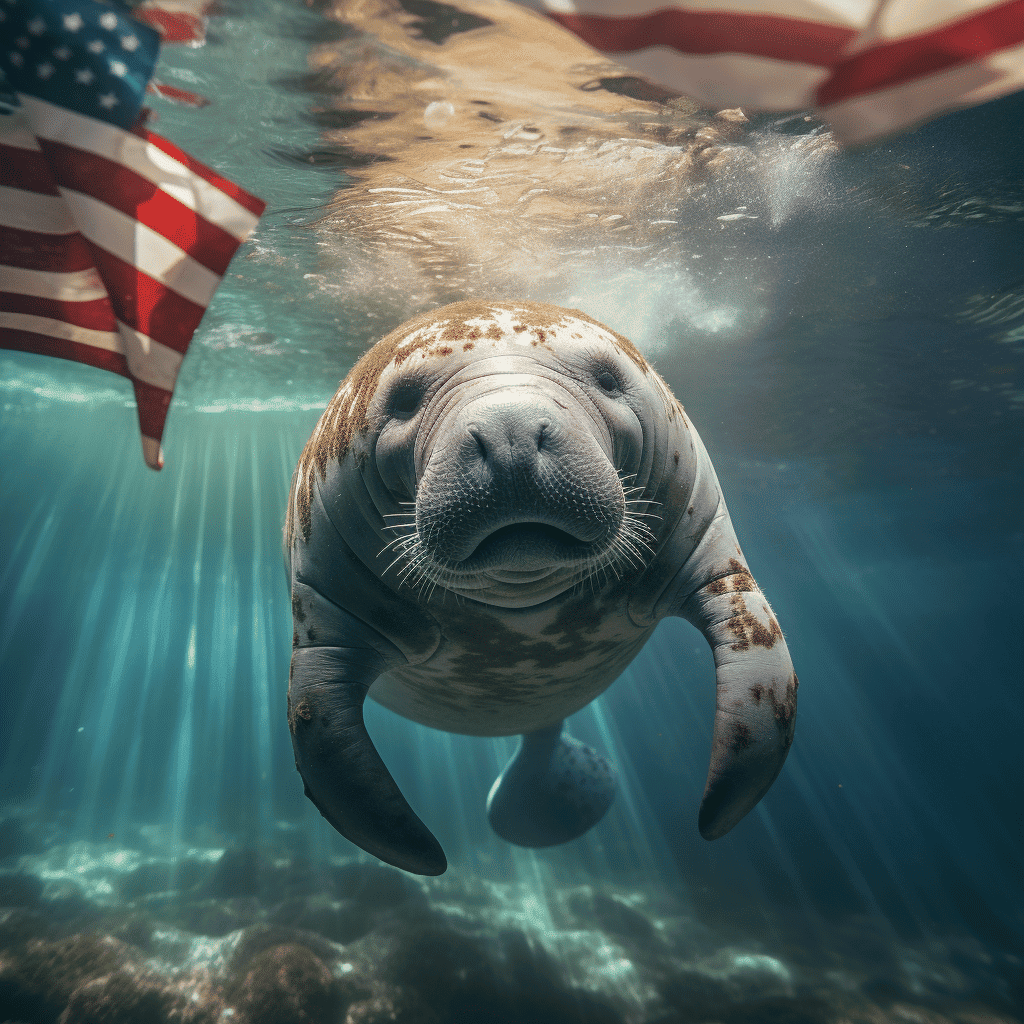
Certainly! Here’s a table summarizing 10 key characteristics of the Manatee:
| Characteristic | Description |
|---|---|
| Scientific Name | Trichechus |
| Conservation Status | Vulnerable to Endangered, depending on the region |
| Habitat | Slow-moving rivers, estuaries, saltwater bays, and coastal areas |
| Physical Appearance | Large, grayish-brown body with a flat, paddle-shaped tail and flippers |
| Size | Length: 2.8-4.6 m (9-15 ft), Weight: 200-600 kg (440-1,320 lbs) |
| Diet | Herbivorous, mainly seagrass and freshwater vegetation |
| Social Structure | Solitary or small groups, generally not territorial |
| Breeding | Gestation period of about 12 months; usually single calf born |
| Lifespan | About 40 years in the wild |
| Behavior | Gentle and slow-moving, known for their curiosity |
| Importance | Indicator species for ecosystem health; cultural significance in some regions |
Manatees, often called “sea cows,” are known for their peaceful nature and are closely related to elephants. They play a crucial role in influencing plant growth in the shallow rivers, bays, estuaries, canals, and coastal areas where they live.
Mountain Lion
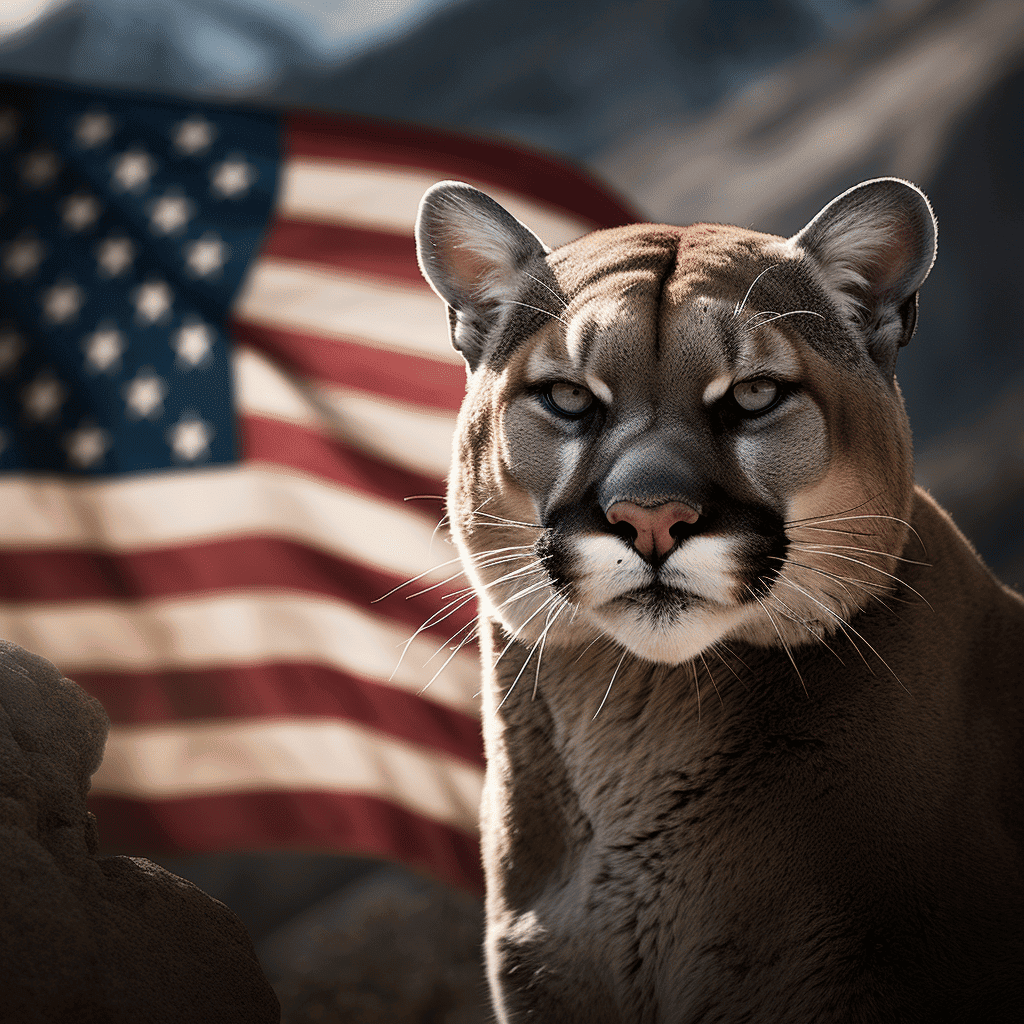
Here’s a table summarizing 10 key characteristics of the Mountain Lion:
| Characteristic | Description |
|---|---|
| Scientific Name | Puma concolor |
| Conservation Status | Least Concern, but certain populations may be at risk |
| Habitat | Diverse environments, from forests to deserts and mountainous areas |
| Physical Appearance | Tawny to brown-red fur, white underparts, long tail with black tip |
| Size | Length: 1.5-2.75 m (5-9 ft) including tail, Height: 60-90 cm (24-35 in) at shoulder |
| Weight | 29-100 kg (64-220 lbs), varies by region and sex |
| Diet | Carnivorous, primarily deer, but also smaller animals |
| Social Structure | Solitary and territorial, except during mating or mothers with cubs |
| Breeding | No specific breeding season, gestation ~91 days |
| Lifespan | 8-13 years in the wild, up to 20 years in captivity |
| Behavior | Highly adaptable, elusive, and primarily nocturnal |
Also known as cougars or pumas, mountain lions are elusive and powerful predators that roam the mountains and forests of North and South America. They are one of the continent’s top predators and play a vital role in maintaining the balance of their ecosystems.
American Alligator
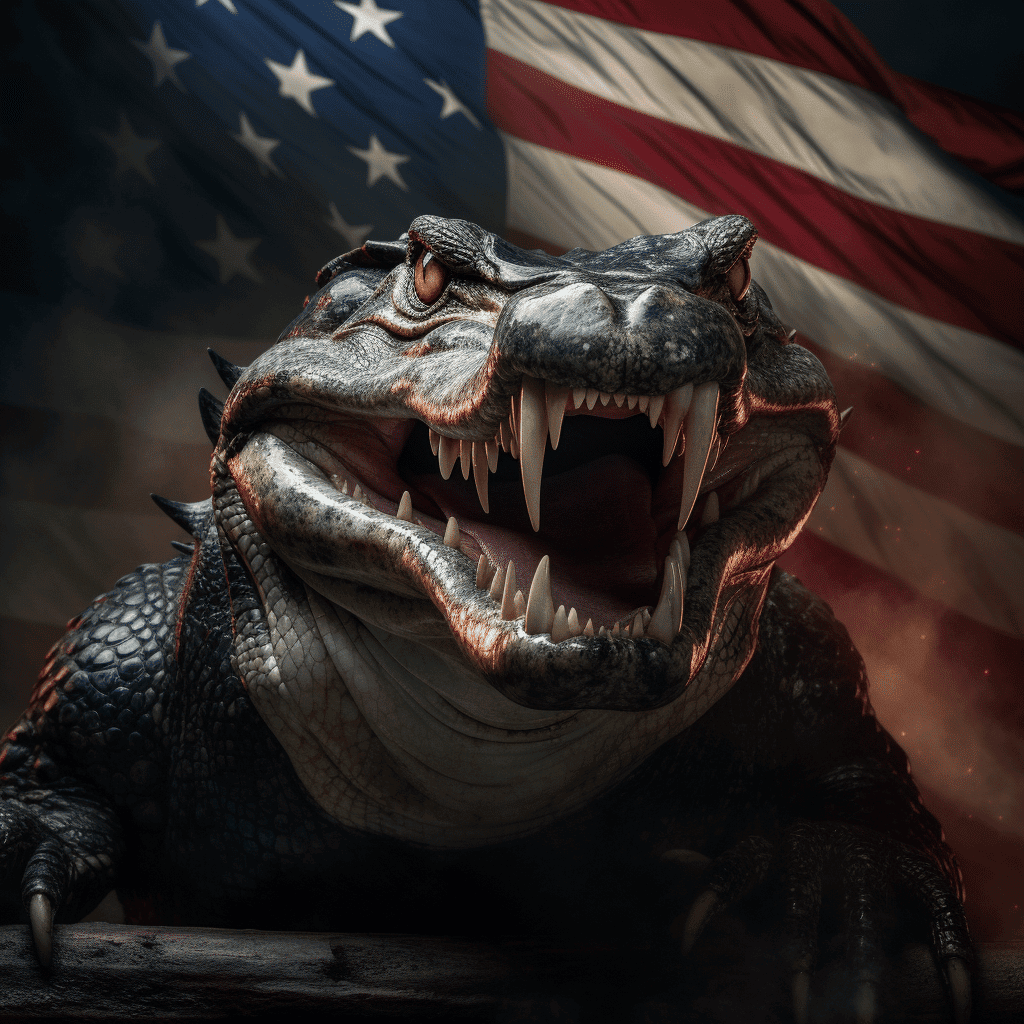
Here’s a table summarizing 10 key characteristics of the Alligator:
| Characteristic | Description |
|---|---|
| Scientific Name | Alligator mississippiensis (American Alligator) |
| Conservation Status | Least Concern, but was once critically endangered |
| Habitat | Freshwater environments like swamps, marshes, and rivers in the Southeastern U.S. |
| Physical Appearance | Large, robust body, broad snout, powerful tail, armor-like scales |
| Size | Length: 3-4.6 m (10-15 ft), larger in males |
| Weight | 230-500 kg (500-1,100 lbs), varies with size |
| Diet | Carnivorous, eating fish, birds, mammals, and reptiles |
| Social Structure | Solitary, except during mating season |
| Breeding | Males bellow to attract females; nesting in summer |
| Lifespan | 35-50 years in the wild, up to 70 years in captivity |
| Behavior | Apex predators, play a key role in their ecosystem |
The American Alligator is a remarkable species that has survived since the time of the dinosaurs, serving as both a predator and a keystone species in its habitat. Their presence is crucial for maintaining the ecological balance in their habitats.
Residing primarily in the southeastern United States, these reptiles are both feared and respected. A success story of wildlife management, American alligators have recovered from near extinction to now thrive in their natural habitats.
California Condor
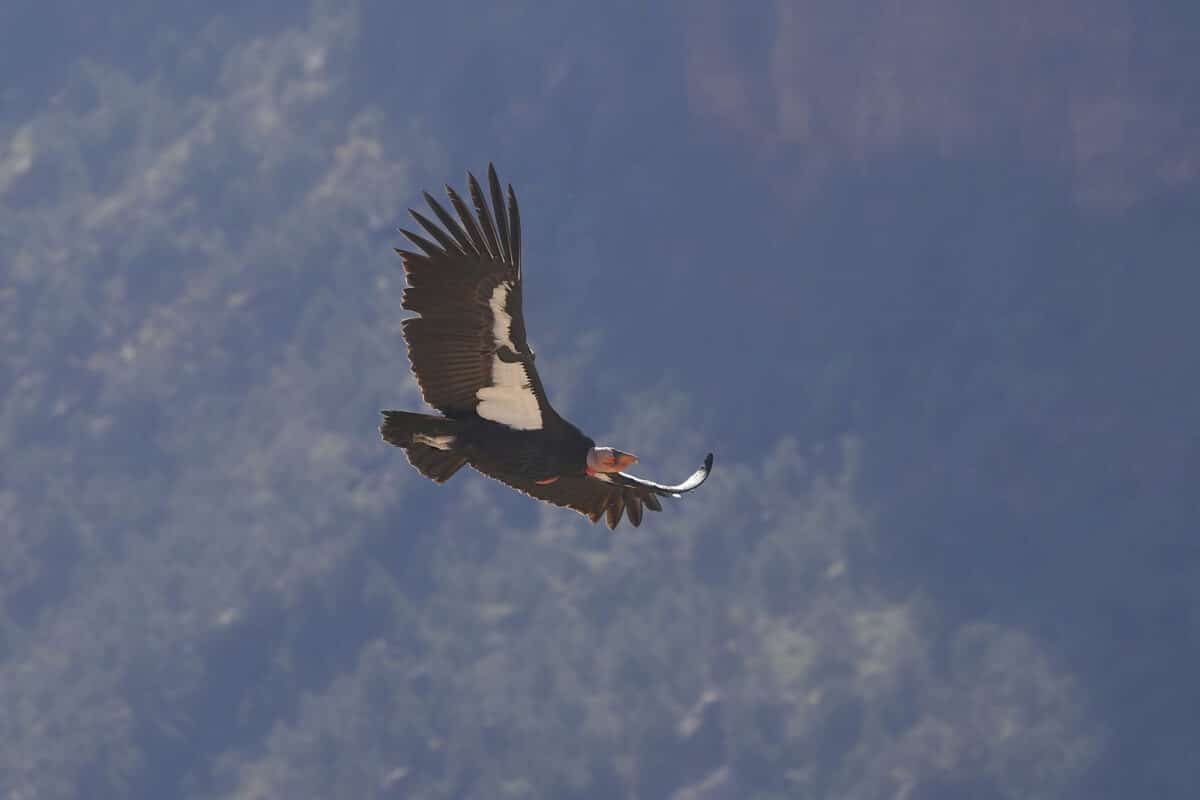
Certainly! Here’s a table summarizing 10 key characteristics of the California Condor:
| Characteristic | Description |
|---|---|
| Scientific Name | Gymnogyps californianus |
| Conservation Status | Critically Endangered, part of captive breeding programs |
| Habitat | Rocky shrubland, coniferous forests, and grassland |
| Physical Appearance | Large bird with black plumage, bald head, white wing undersides |
| Wingspan | Up to 2.9 m (9.5 ft), one of the largest of any North American bird |
| Weight | 8-14 kg (18-31 lbs) |
| Diet | Scavengers, feeding mainly on carrion |
| Social Structure | Solitary or in small flocks, highly social among their own kind |
| Breeding | Monogamous, breeding every other year, nest in cliff cavities |
| Lifespan | 60 years or more in the wild and captivity |
| Importance | Symbol of wildlife conservation and recovery efforts |
The largest North American land bird, the California condor is a critically endangered species. Conservation efforts have helped these impressive birds, known for their immense wingspan, make a slow but steady comeback.
Monarch Butterfly
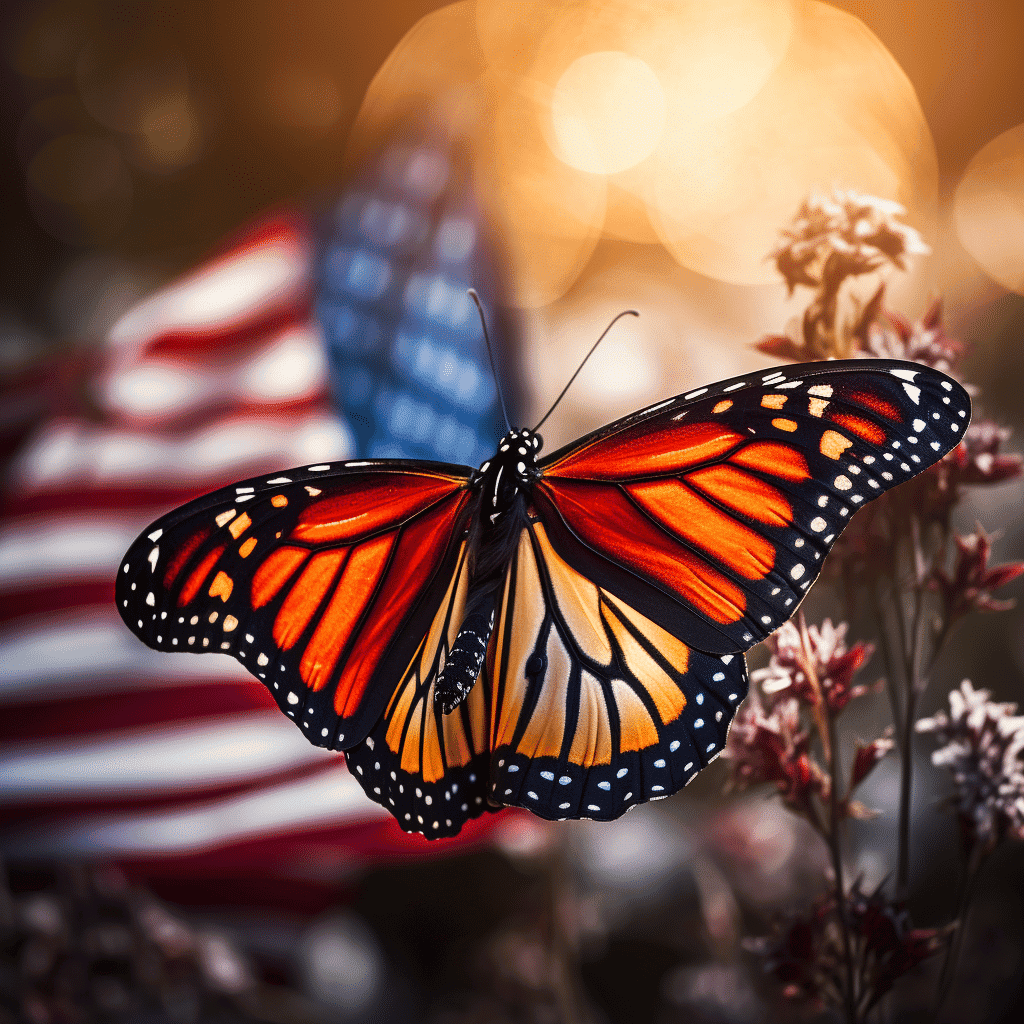
Here’s a table summarizing 10 key characteristics of the Monarch Butterfly:
| Characteristic | Description |
|---|---|
| Scientific Name | Danaus plexippus |
| Conservation Status | Not formally endangered, but populations are declining |
| Habitat | Meadows, fields, marshes, and along roadsides in North America |
| Physical Appearance | Bright orange wings with black veins and white spots around the edges |
| Wingspan | 8.9-10.2 cm (3.5-4 in) |
| Diet | Nectar from various flowers; larvae feed on milkweed |
| Migration | Known for long migrations, up to 4,000 miles |
| Breeding | Several generations per year; winter generation is migratory |
| Lifespan | 2-6 weeks for summer generations, up to 8 months for migratory generation |
| Importance | Indicator of environmental health, pollinators |
Known for their incredible mass migration, Monarch butterflies are a wonder of nature. These delicate insects travel thousands of miles from North America to Mexico, a journey that spans generations.
Wolverine
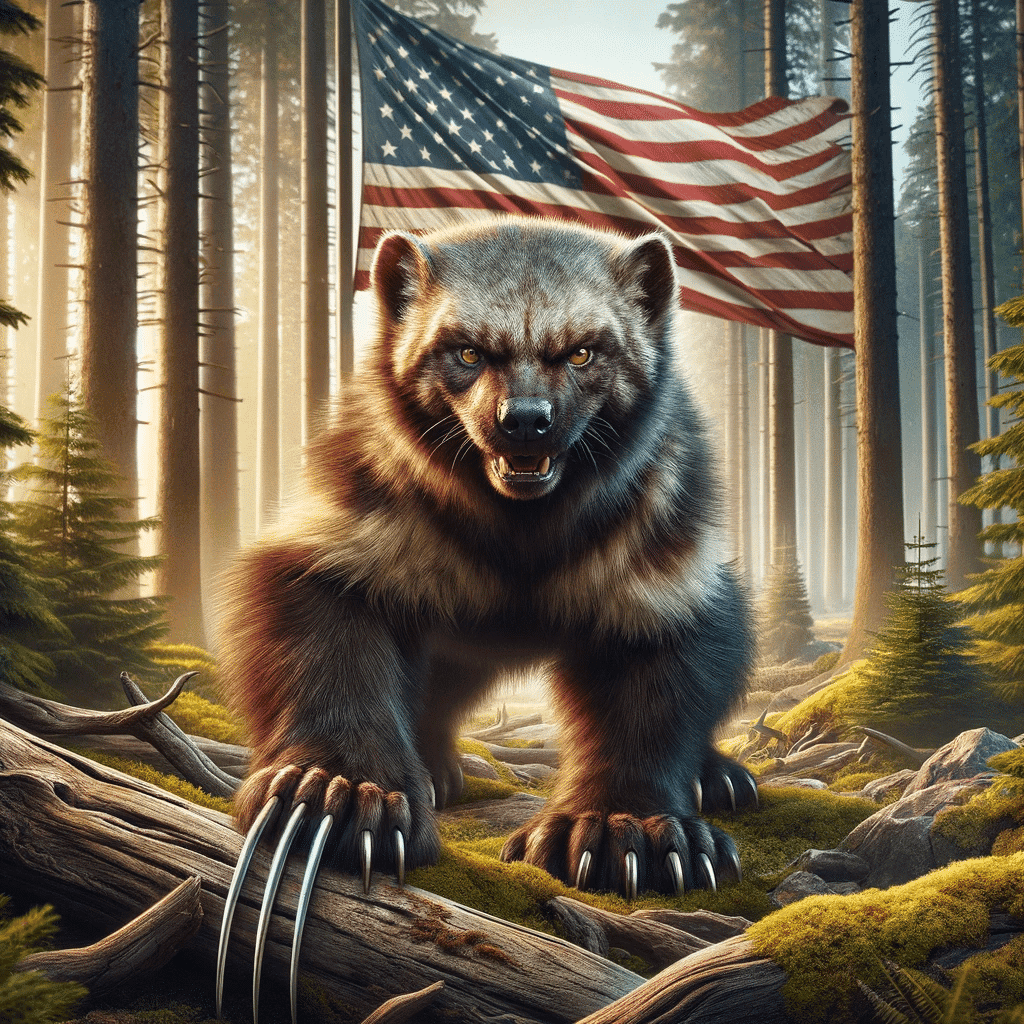
Here’s a table summarizing 10 key characteristics of the Wolverine:
| Characteristic | Description |
|---|---|
| Scientific Name | Gulo gulo |
| Conservation Status | Least Concern, but populations are decreasing in some areas |
| Habitat | Boreal forests, subarctic and alpine tundra, primarily in the Northern Hemisphere |
| Physical Appearance | Stocky and muscular build, brown fur with light stripes, bushy tail |
| Size | Length: 65-107 cm (26-42 in), Tail: 17-26 cm (7-10 in) |
| Weight | 9-25 kg (20-55 lbs), males larger than females |
| Diet | Carnivorous, feeding on carrion and small animals |
| Social Structure | Solitary and territorial, with large home ranges |
| Breeding | Mating in summer; delayed implantation of embryos |
| Lifespan | 7-12 years in the wild, longer in captivity |
| Behavior | Known for their strength and ferocity |
This small but fierce animal is known for its strength and tenacity. Wolverines are found in remote, northern forests and tundras, where they are top scavengers and predators.
Gray Wolf
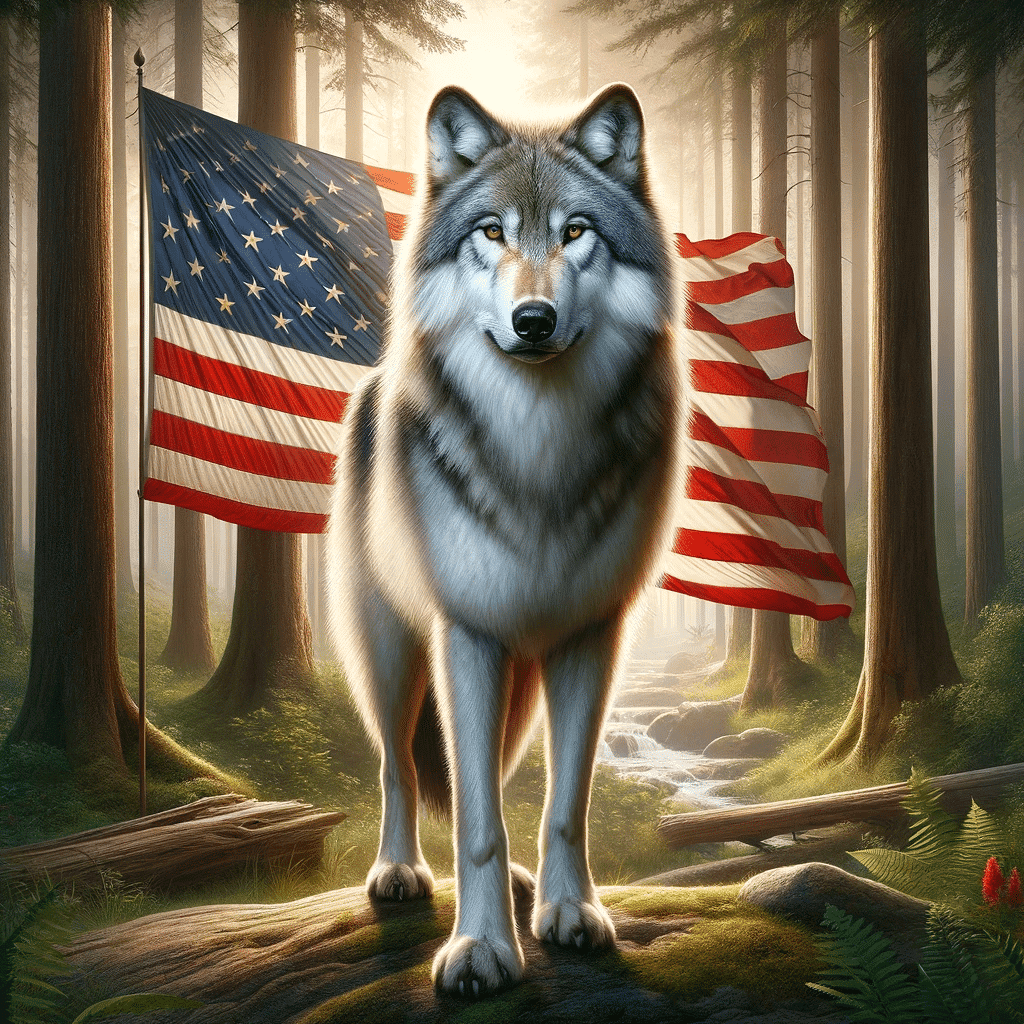
Here’s a table summarizing 10 key characteristics of the Gray Wolf:
| Characteristic | Description |
|---|---|
| Scientific Name | Canis lupus |
| Conservation Status | Varies by region; from Least Concern to Endangered |
| Habitat | Diverse, including forests, tundras, deserts, and grasslands |
| Physical Appearance | Large canine, thick fur that varies in color from grey to brown, black, and white |
| Size | Length: 1-1.5 m (3.3-5 ft) body, Height: 80-85 cm (31-33 in) at shoulder |
| Weight | 30-50 kg (66-110 lbs), but can vary widely |
| Diet | Carnivorous, primarily large ungulates, also smaller mammals and carrion |
| Social Structure | Pack animals, typically 6-10 individuals per pack |
| Breeding | Monogamous, breeding once a year in late winter |
| Lifespan | 6-8 years in the wild, up to 13 years in captivity |
| Behavior | Highly territorial, complex social structures |
The Gray Wolf is a keystone species, playing a crucial role in maintaining the ecological balance in their habitats. Their social structure and pack dynamics are among the most complex and studied in the animal kingdom.
Symbolic of the wild spirit of America’s wilderness, the gray wolf was once nearly hunted to extinction. Conservation efforts have helped restore their populations in parts of their historic range.
American Beaver
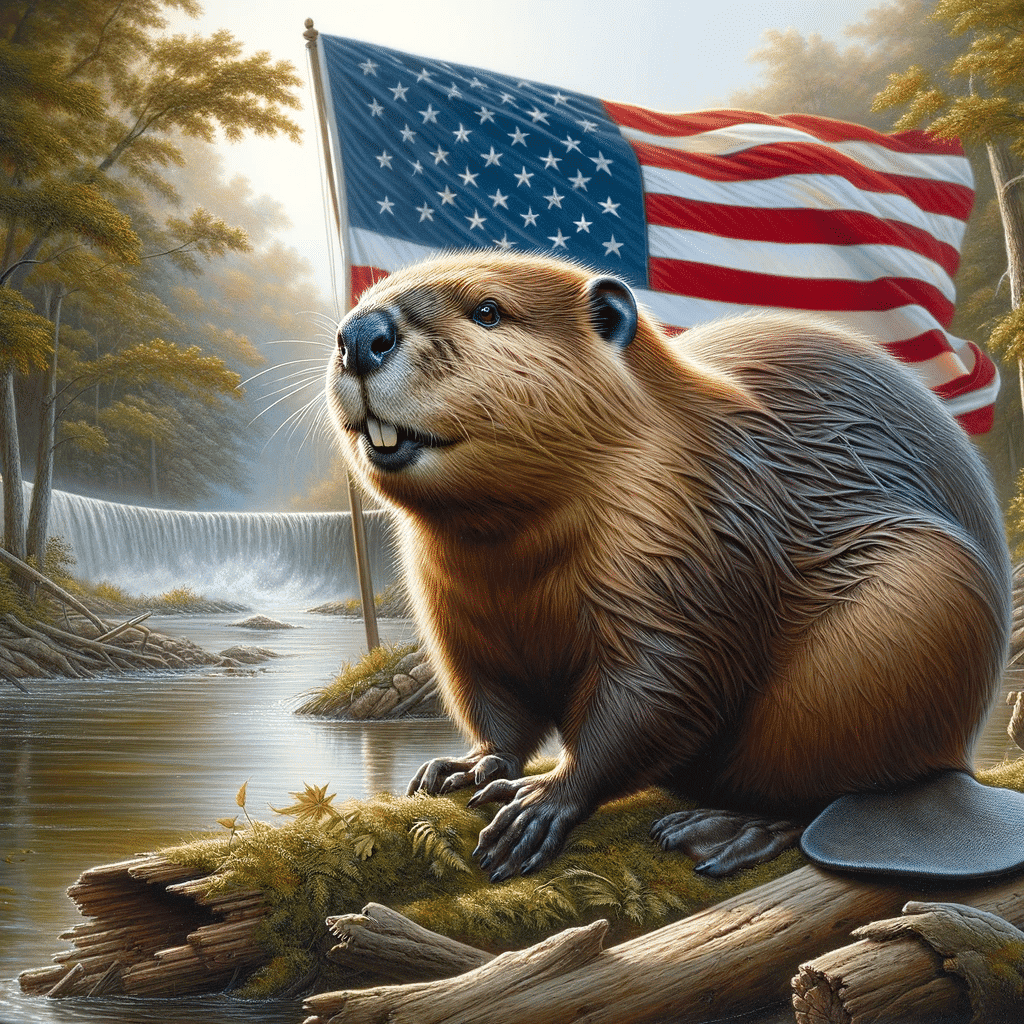
Here’s a table summarizing 10 key characteristics of the American Beaver:
| Characteristic | Description |
|---|---|
| Scientific Name | Castor canadensis |
| Conservation Status | Least Concern, populations have recovered after historic overhunting |
| Habitat | Freshwater environments like rivers, lakes, and ponds |
| Physical Appearance | Large rodent with brown fur, flat, scaly tail, and webbed hind feet |
| Size | Length: 74-90 cm (29-35 in), Tail: 20-35 cm (8-14 in) |
| Weight | 11-32 kg (24-71 lbs) |
| Diet | Herbivorous, primarily tree bark, twigs, and aquatic plants |
| Social Structure | Live in family groups, monogamous pairs with their offspring |
| Engineering | Known for building dams and lodges, significantly altering their habitats |
| Lifespan | About 10-15 years in the wild, up to 20 years in captivity |
| Importance | Ecosystem engineers, creating wetlands that benefit other species |
The American Beaver is renowned for its natural engineering skills, altering ecosystems in ways that benefit numerous other species. Their dam-building activities can create new habitats and help to regulate water flow in their environments.
Moose
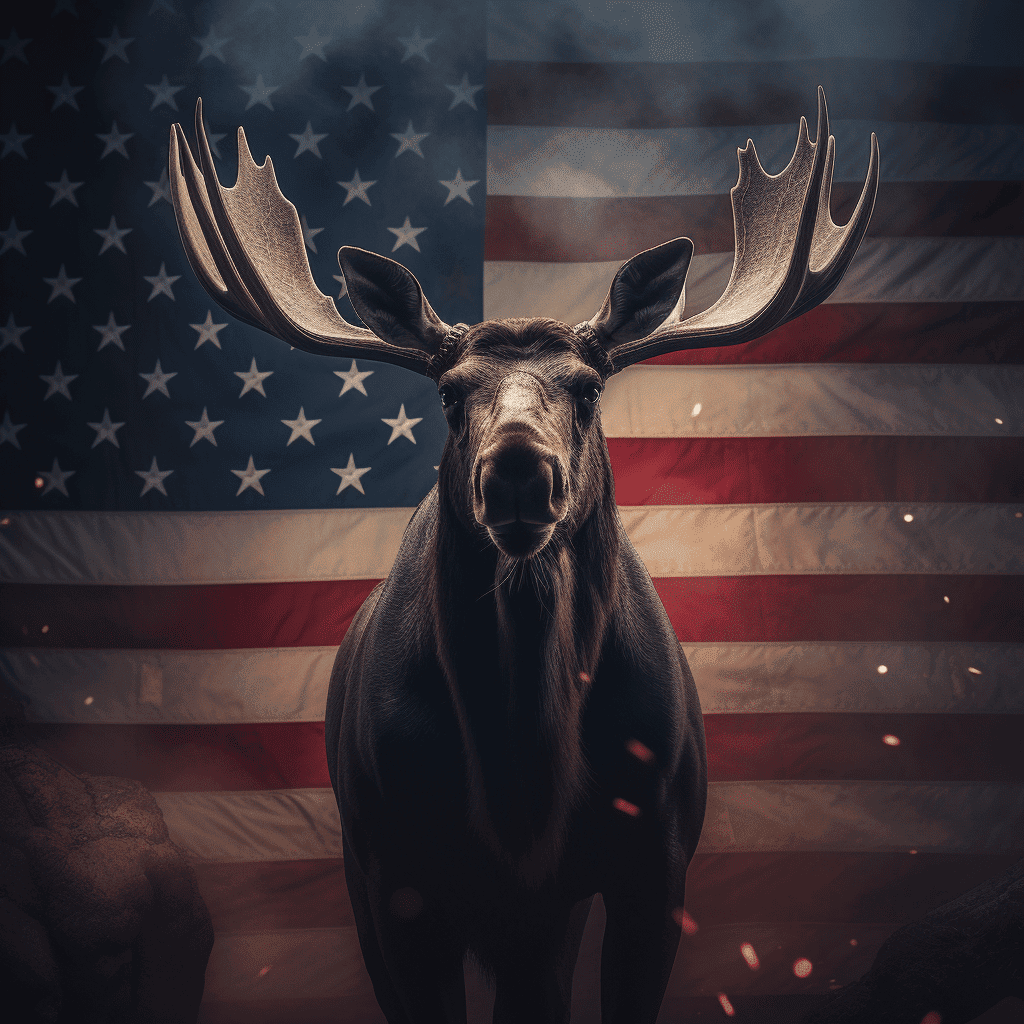
Here’s a table summarizing 10 key characteristics of the Moose:
| Characteristic | Description |
|---|---|
| Scientific Name | Alces alces |
| Conservation Status | Least Concern, but locally threatened in some areas |
| Habitat | Boreal and mixed deciduous forests in the Northern Hemisphere |
| Physical Appearance | Large body, long legs, humped shoulders, distinctive long head with a drooping nose |
| Size | Height: 1.5-2.1 m (5-7 ft) at shoulder, Length: 2.4-3.2 m (8-10.5 ft) |
| Weight | 380-700 kg (838-1,543 lbs), males significantly larger than females |
| Diet | Herbivorous, eating leaves, twigs, bark, and aquatic vegetation |
| Antlers | Males have large, broad, palmate antlers that can span over 1.8 m (6 ft) |
| Breeding | Seasonal breeders, usually in the fall |
| Lifespan | Typically 15-20 years in the wild |
| Behavior | Generally solitary except during mating season or mothers with calves |
Majestic and graceful, moose are one of the largest members of the deer family. Found in forests and mountain meadows across North America, they are known for their impressive antlers and bugling calls.
Each of these animals holds a special place in the American landscape, contributing to the ecological diversity and natural beauty of the continent. Their existence and well-being are vital for the environmental health and cultural and natural heritage of the United States. This diverse array of wildlife reminds us of the importance of conservation to protect these unique treasures for future generations.
Up next:
The Top 12 Scariest-Looking Animals Ever
Top 12 Animals That Stealthily Roam Through Taylor Swift Songs
Join our Forum for free today!

- The Kleptomaniac Cat That Rules Houston - July 20, 2024
- Elephant Makes a Lifelong Friend at Sanctuary in Tennessee - July 14, 2024
- Evidence For World’s Oldest Fossilized Forest Discovered in New York - July 11, 2024

